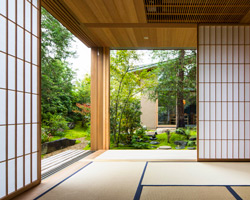KEEP UP WITH OUR DAILY AND WEEKLY NEWSLETTERS
PRODUCT LIBRARY
the minimalist gallery space gently curves at all corners and expands over three floors.
kengo kuma's qatar pavilion draws inspiration from qatari dhow boat construction and japan's heritage of wood joinery.
connections: +730
the home is designed as a single, monolithic volume folded into two halves, its distinct facades framing scenic lake views.
the winning proposal, revitalizing the structure in line with its founding principles, was unveiled during a press conference today, june 20th.
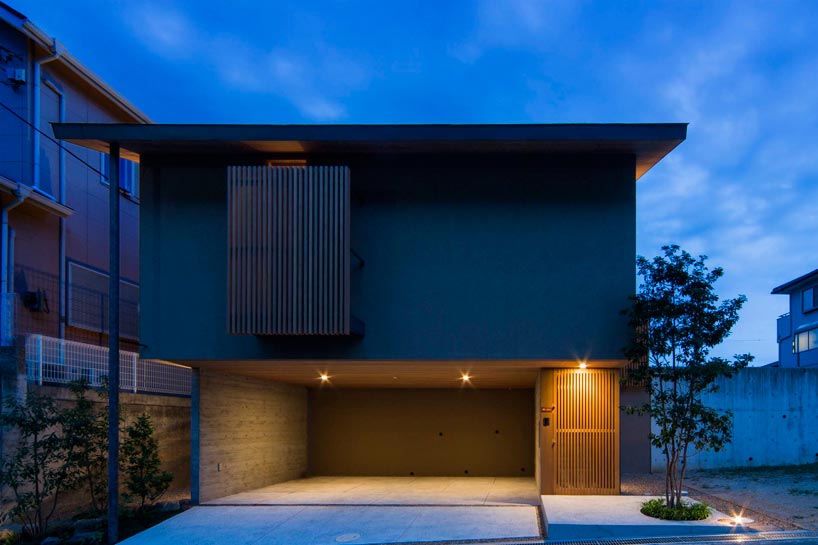
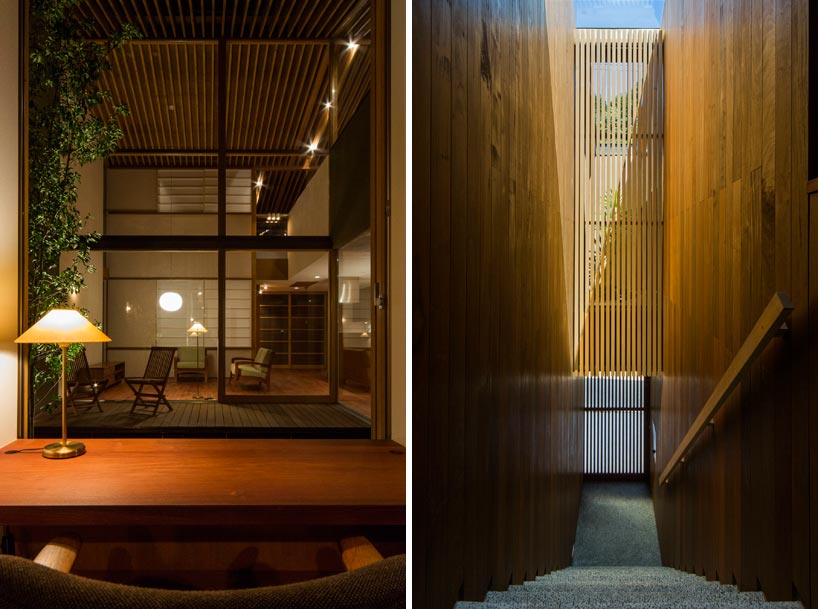 (left) view from the master bedroom, across the atrium and into the living room and mezzanine level. (right) looking down to the entrance from the top of the stairsimage © kazushi hirano
(left) view from the master bedroom, across the atrium and into the living room and mezzanine level. (right) looking down to the entrance from the top of the stairsimage © kazushi hirano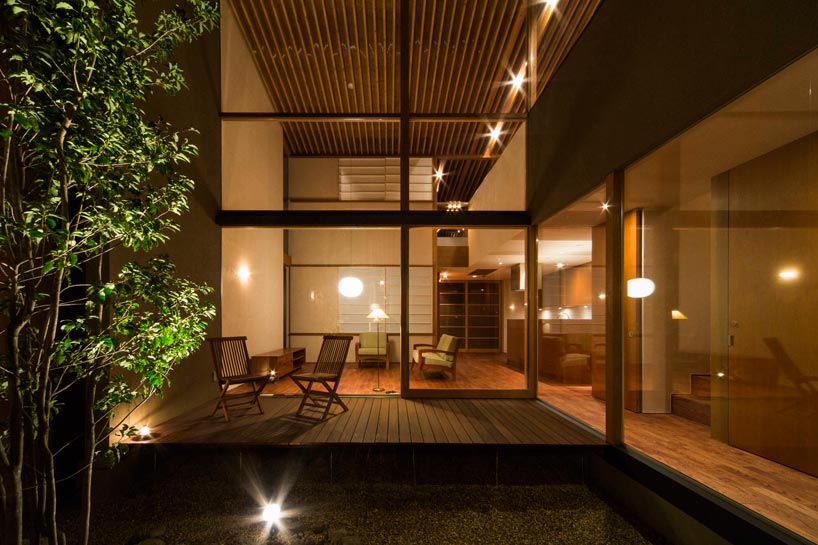 the ‘temple garden’ is the center of the plan and ties all of the spaces together by visually layering the programimage © kazushi hirano
the ‘temple garden’ is the center of the plan and ties all of the spaces together by visually layering the programimage © kazushi hirano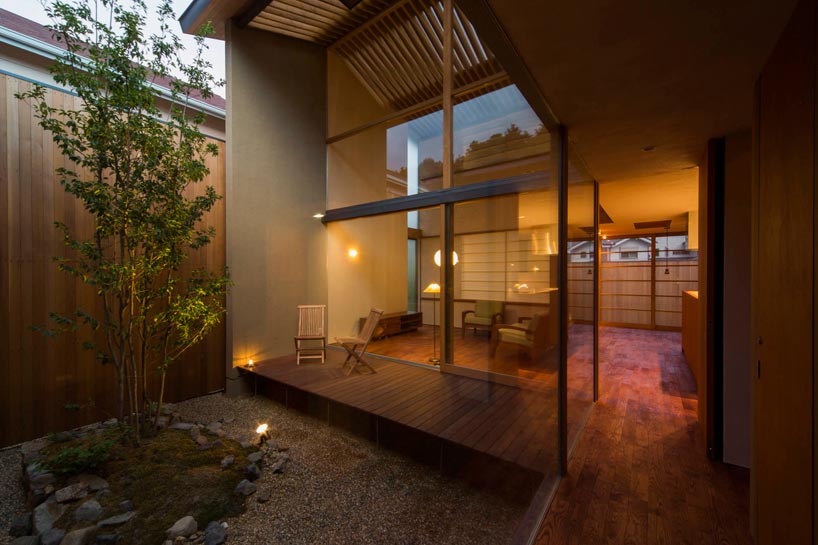 the openness of the plan lends views to the living room, kitchen, and through the house to the neighboring propertyimage © kazushi hirano
the openness of the plan lends views to the living room, kitchen, and through the house to the neighboring propertyimage © kazushi hirano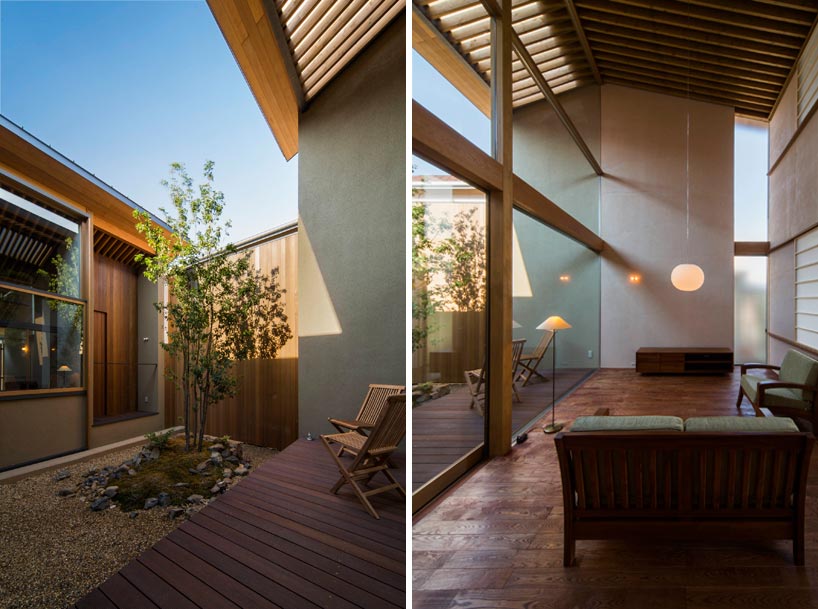 (left) a single moment of vegetation is seen from the porch(right) the porch is an extension of the living area, differentiated by different hardwood floors and glazingimage © kazushi hirano
(left) a single moment of vegetation is seen from the porch(right) the porch is an extension of the living area, differentiated by different hardwood floors and glazingimage © kazushi hirano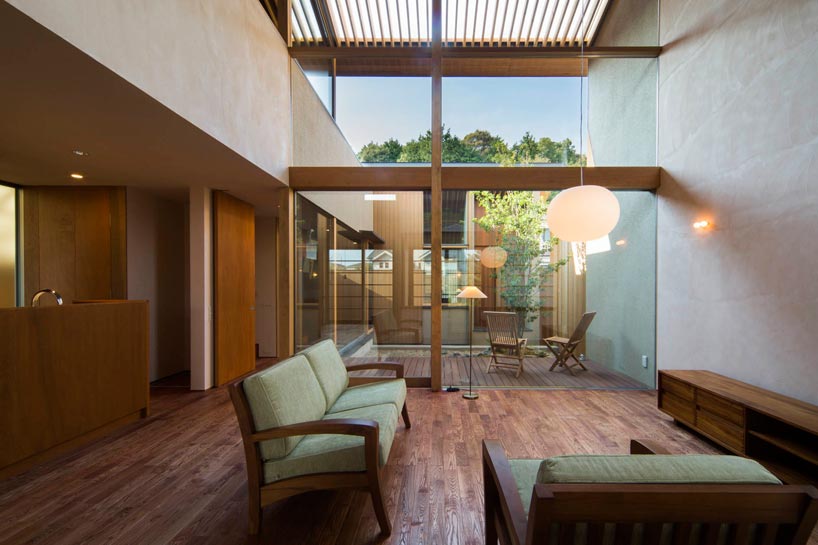 the atrium allows the space double high ceilings and reflections of the surrounding greeneryimage © kazushi hirano
the atrium allows the space double high ceilings and reflections of the surrounding greeneryimage © kazushi hirano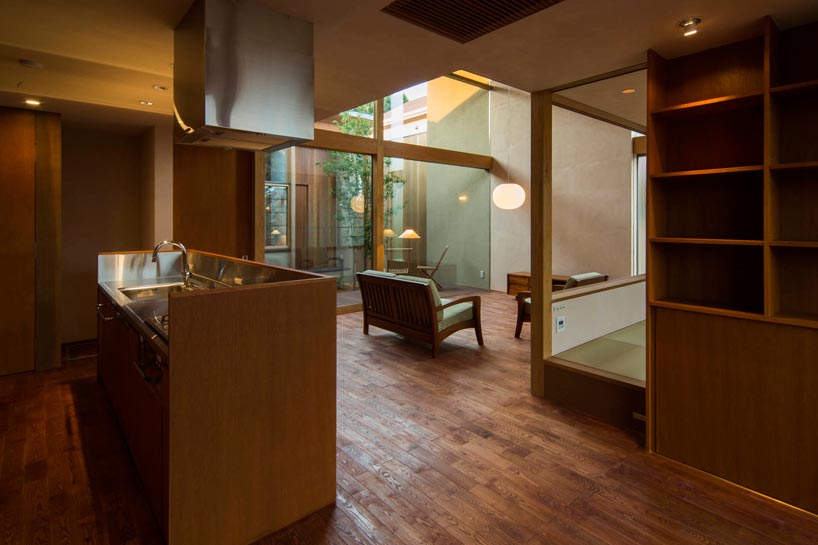 view from the kitchenimage © kazushi hirano
view from the kitchenimage © kazushi hirano 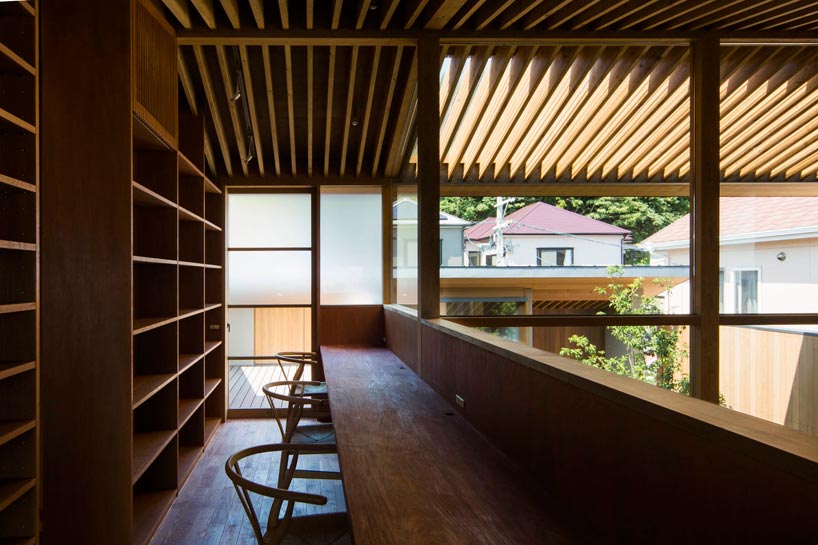 the view of the study shows that exposed beams delimit lines of sight and create passive lighting systems image © kazushi hirano
the view of the study shows that exposed beams delimit lines of sight and create passive lighting systems image © kazushi hirano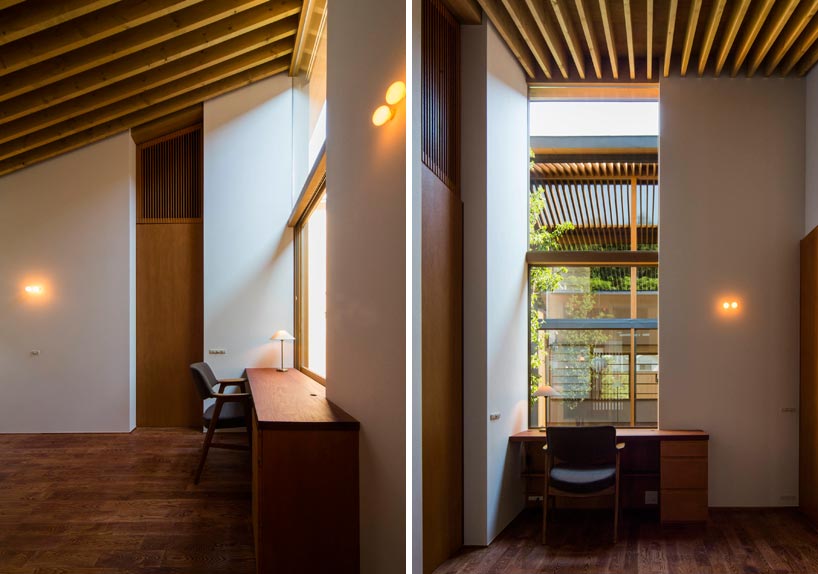 view of the study in the master bedroom, mezzanine levelimage © kazushi hirano
view of the study in the master bedroom, mezzanine levelimage © kazushi hirano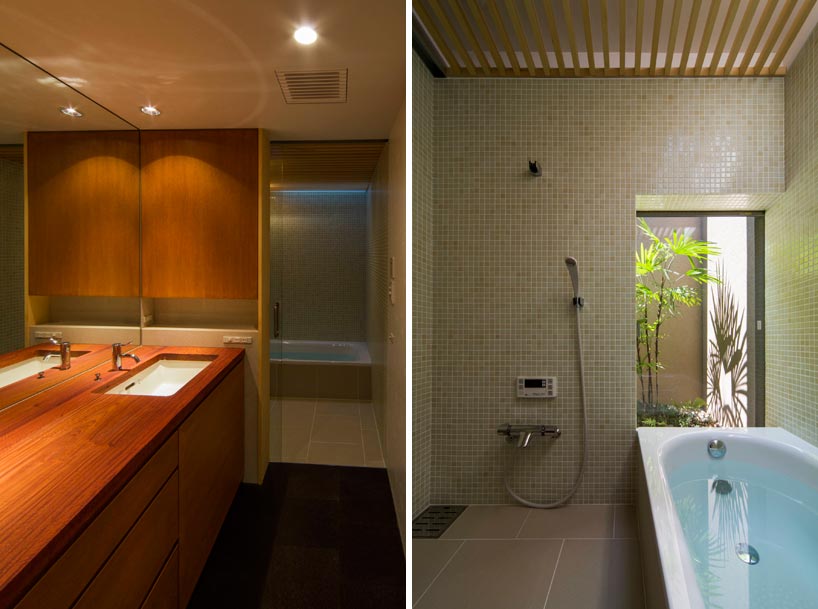 (left) washroom(right) connected bathroom image © kazushi hirano
(left) washroom(right) connected bathroom image © kazushi hirano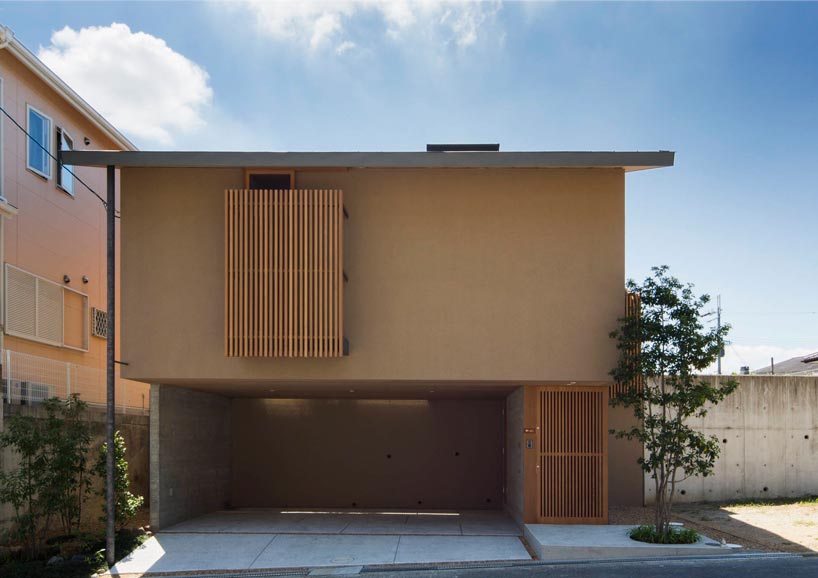 exterior daytime view shows the types of slatted screens used through the house image © kazushi hirano
exterior daytime view shows the types of slatted screens used through the house image © kazushi hirano